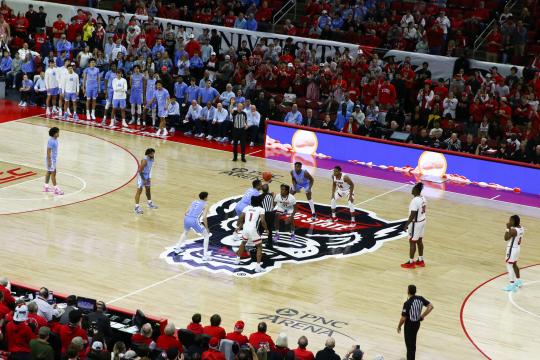Missed the near-total lunar eclipse? Watch it here
The Full Frost Moon passed through Earth's shadow early Friday morning in a partial, nearly total lunar eclipse.
Posted — UpdatedThe Full Frost Moon passed through Earth's shadow early Friday morning in a partial, nearly total lunar eclipse.
The partial eclipse was visible beginning at 2:18 a.m. and peaked at 4:03 a.m. It was visible until 5:45 a.m.
Eclipse color
During the partial eclipse, the Moon appeared red. Just as sunsets here on Earth vary from pale yellow through orange to red, you can see these same colors in a lunar eclipse, because they are created by the same thing -- light passing through our atmosphere.
When the atmosphere is filled with particulates, shorter wave lengths of light (toward the blue end of the spectrum) are scattered and longer wave lengths (toward the red end) pass through. The more particulates there are (such as smoke from wildfires), the more intense the colors. The larger the particulates (such as volcanic ash), the redder the colors.
When to look on Friday morning
- 2:18 AM partial eclipse begins
- 3:00 AM 50% partial eclipse
- 4:03 AM greatest eclipse
- 5:05 AM 50% partial eclipse
- 5:47 AM partial eclipse ends
- 6:56 AM sunrise
- 7:03 AM moonset
The next lunar eclipse will be total one on May 15, 2022 followed by another total lunar eclipse on Nov 8, 2022. The next solar eclipse visible from our area will be the annual solar eclipse on Oct 23, 2023 that will pass through the southwestern United States, Central America and northern portions of South America.
Related Topics
• Credits
Copyright 2024 by Capitol Broadcasting Company. All rights reserved. This material may not be published, broadcast, rewritten or redistributed.






